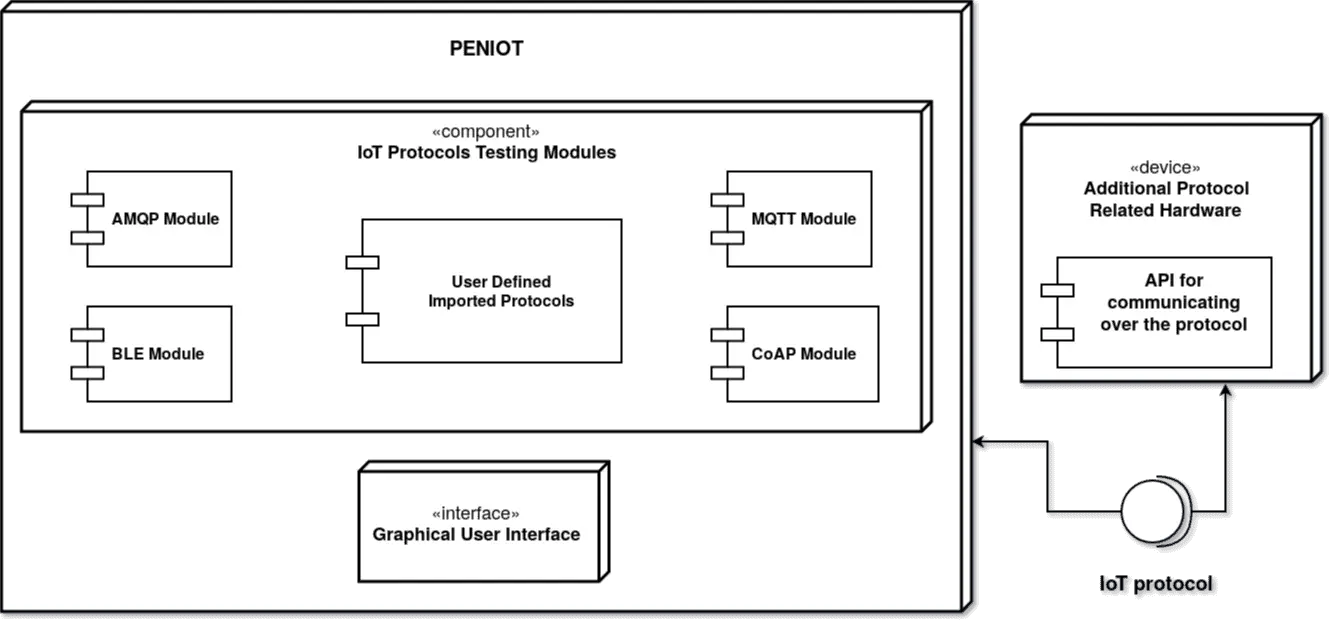
PENIOT: Penetration Testing Tool for IoT
What is PENIOT?
PENIOT is a penetration testing tool for the Internet of Things (IoT) devices. It helps you to test/penetrate your devices by targeting their internet connectivity with different types of security attacks. In other words, you can expose your device to both active and passive security attacks. After deciding target device and necessary information (or parameters) of that device, you can perform active security attacks like altering/consuming system resources, replaying valid communication units and so on. Also, you can perform passive security attacks such as breaching of confidentiality of important information or reaching traffic analysis. Thanks to PENIOT, all those operations can be semi-automated or even fully automated. In short, PENIOT is a package/framework for targeting IoT devices with protocol-based security attacks.
Also, it gives you a baseline structure for your further injections of new security attacks or new IoT protocols. One of the most important features of PENIOT is being extensible. By default, it has several common IoT protocols and numerous security attacks related to those protocols. But, it can be extended further via exporting the basic structure of internally used components so that you can develop your attacks in harmony with the internal structure of the PENIOT.
Why is PENIOT required?
The IoT paradigm has experienced immense growth in the past decade, with billions of devices connected to the Internet. Most of these devices lack even basic security measures due to their capacity constraints and designs made without security in mind due to the shortness of time-to-market. Due to the high connectivity in IoT, attacks that have devastating effects in extended networks can easily be launched by hackers through vulnerable devices.
Up until now, penetration testing was done manually if it was not ignored at all. This procedure made the testing phase of devices very slow. On the other hand, the firms which produce IoT devices should always be up to date on testing their devices in terms of reliability, robustness, as well as their provided functionalities since being exposed to security attacks by malicious people, could cause unexpected impacts on end-users. The main aim of PENIOT is to accelerate the process of security testing. It enables you to figure out security flaws on your IoT devices by automating the time-consuming penetration testing phase.
What does PENIOT provide?
First of all, PENIOT provides novelty. It is one of the first examples of penetration testing tools in the IoT field. There are only one or two similar tools which are specialized in IoT, but they are still on the development phase, so not completed yet.
Since the number of IoT devices is increasing drastically, IoT devices become more and more common in our daily life. Smart homes, smart bicycles, medical sensors, fitness trackers, smart locks and connected factories are just a few examples of IoT products. Given this, we felt the need to choose some of the most commonly used IoT protocols to plant into PENIOT by default. We chose the following protocols as the default IoT protocols included in the PENIOT. These IoT protocols are tested with various types of security attacks such as DoS, Fuzzing, Sniffing and Replay attacks.
Following protocols are currently supported:
- Advanced Message Queuing Protocol (AMQP)
- Bluetooth Low Energy (BLE)
- Constraint Application Protocol (CoAP)
- Message Queuing Telemetry Transport (MQTT)
Moreover, it enables you to export the internal mainframe of its own implemented protocol and attacks to implement your own protocols or attacks. Also, you can extend already existing protocols with your newly implemented attacks. And lastly, it provides you an easy to use, user-friendly graphical user interface.
Install && Use
Copyright (c) 2018 Berat Cankar, Bigehan Bingöl, Doğukan Çavdaroğlu, Ebru Çelebi